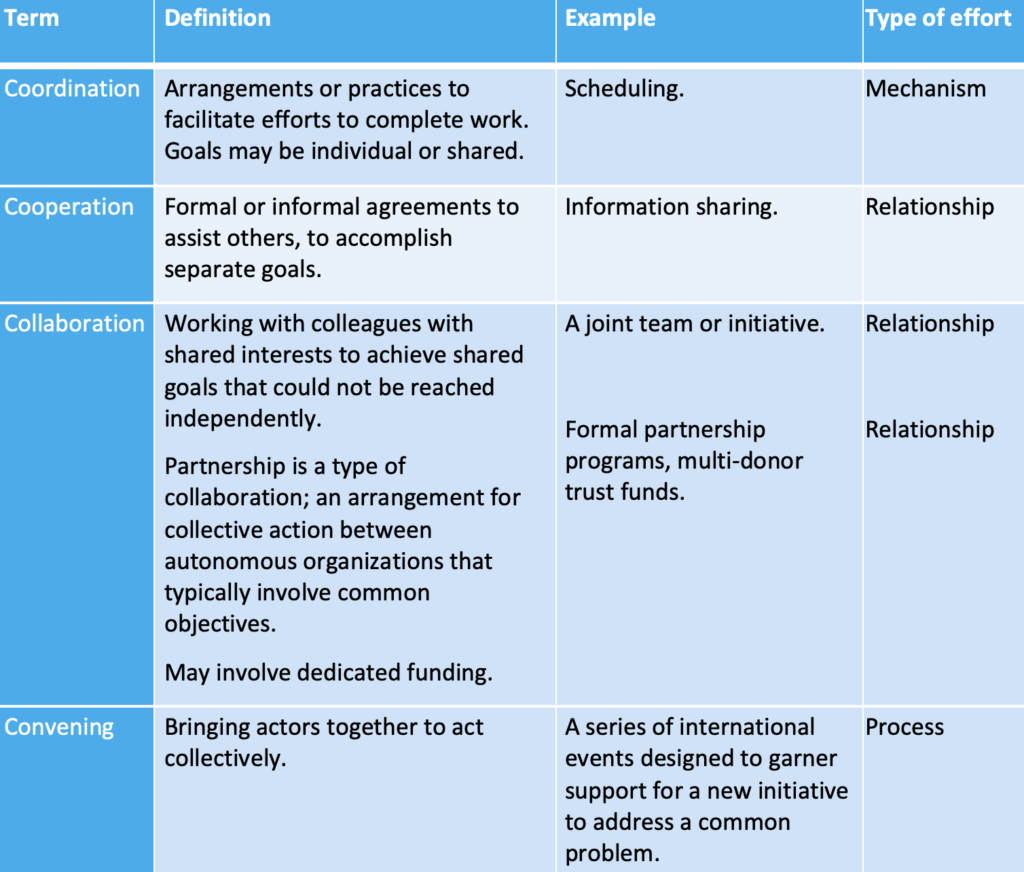Hello, AEA365 community! Liz DiLuzio here, Lead Curator of the blog. This week is Individuals Week, which means we take a break from our themed weeks and spotlight the Hot Tips, Cool Tricks, Rad Resources and Lessons Learned from any evaluator interested in sharing. Would you like to contribute to future individuals weeks? Email me at AEA365@eval.org with an idea or a draft and we will make it happen.
Hello, we are Rasmus Heltberg (rheltberg@worldbank.org) Lead Evaluation Specialist at World Bank, Independent Evaluation Group and Tamar Gutner (Tgutner@american.edu), Associate Professor at American University. To be transformative, evaluation needs to lift its gaze from individual programs and projects and consider the global systems in which international organizations operate. We believe that it is important to understand and evaluate how international organizations work together.
In a world of polycrisis, of intertwined social, economic, and environmental crises, no organization can hope to be impactful unless it learns to collaborate effectively with other organizations working on related issues.
One would therefore be hard pressed to find an organization that does not profess to value collaboration and cooperation. Look at almost any international organization, and one finds some activities of working with other organizations. But scratch the surface, and one sees shallow and pro forma coordination, organizational self interest, delineation of turf, and power play.
The rhetoric of collaboration is not matched by organizational practice.
To the evaluators and practitioners that want to pay serious attention to the relations between organizations, clarity of terms and concepts is the place to start. Using terms such as ‘partnership’ loosely, without specificity, lumps very different activities together — cooperation, collaboration, coordination, and convening — that have varying degrees of engagement, levels of risk, and time spent. The values and motivations also differ.
Here is how we think of cooperation, collaboration, coordination, and convening:

Hot Tips
Coordination consists of mechanisms, processes, or practices to align people and tasks toward objectives. They may be organizational arrangements, including technologies, plans, and rules, which facilitate people’s efforts to complete their work. Examples include scheduling, planning, or clarity on “who is responsible for what.
Cooperation is typically considered to be short-term, low risk efforts that require few resources. It does not require changing any actor’s internal processes.
Collaboration is a deeper level of engagement that consists of actors working together with shared goals that could not be achieved independently. Collaborations vary widely in terms of formality, resources and incentives. They often have a shared structure and shared accountability.
In a world of polycrisis, we need deeper collaboration, not just vague calls for “more partnerships”.
Partnerships, in our definition, are a form of collaboration, and the most common one. Formal partnership programs with shared governance arrangements are a clearly defined subset of partnerships. “Network type” partnerships are looser structures often aimed at research and knowledge exchange. “Transaction type” partnerships involve a contractual relationship in which Actor A funds Actor B to deliver a certain service. Distinguishing between individual or shared goals also makes clear that actors can cooperate without collaborating.
Convening is about cocreating change. Convening has been defined as “bringing together relevant actors to act collectively to address global or regional development challenges” or as “spaces created for varied stakeholder groups to influence the future collective and individual solution-oriented action on a particular topic.”
The purpose of convening is to create new ways of responding to shared risks, challenges, and opportunities through collective action. This can only happen when organizations not only profess to collaborate but learn to value and practice it.
Do you have questions, concerns, kudos, or content to extend this aea365 contribution? Please add them in the comments section for this post on the aea365 webpage so that we may enrich our community of practice. Would you like to submit an aea365 Tip? Please send a note of interest to aea365@eval.org . aea365 is sponsored by the American Evaluation Association and provides a Tip-a-Day by and for evaluators. The views and opinions expressed on the AEA365 blog are solely those of the original authors and other contributors. These views and opinions do not necessarily represent those of the American Evaluation Association, and/or any/all contributors to this site.
